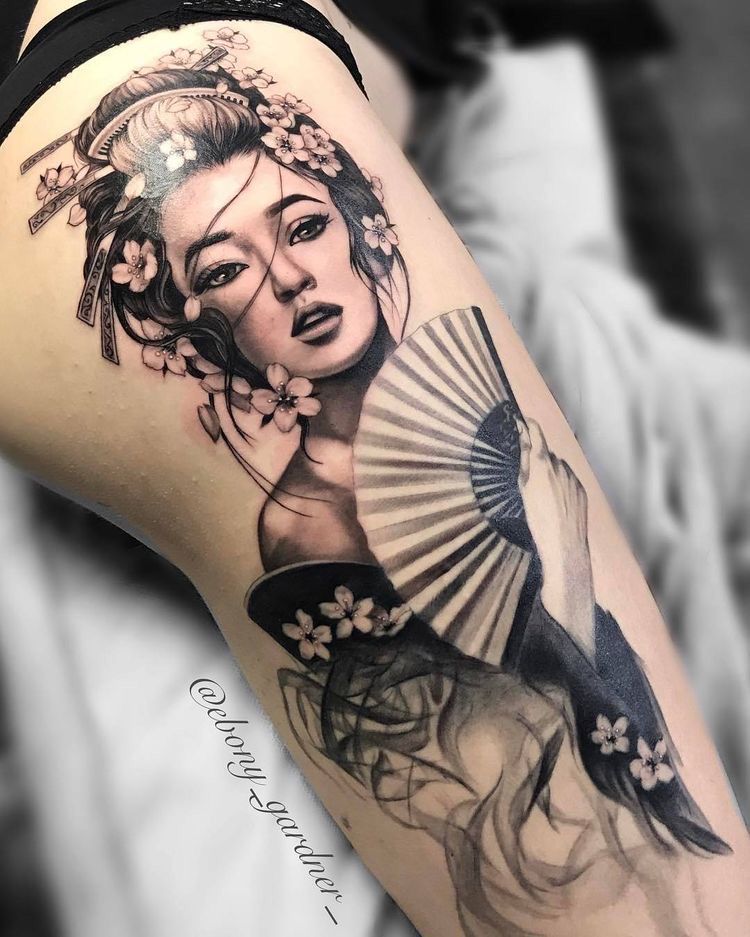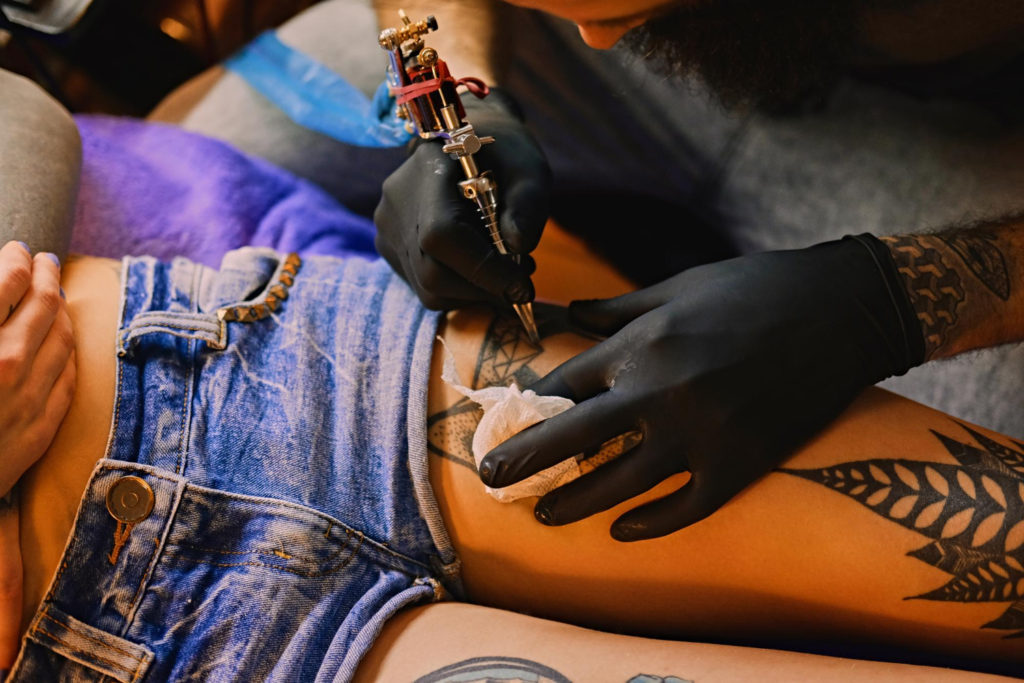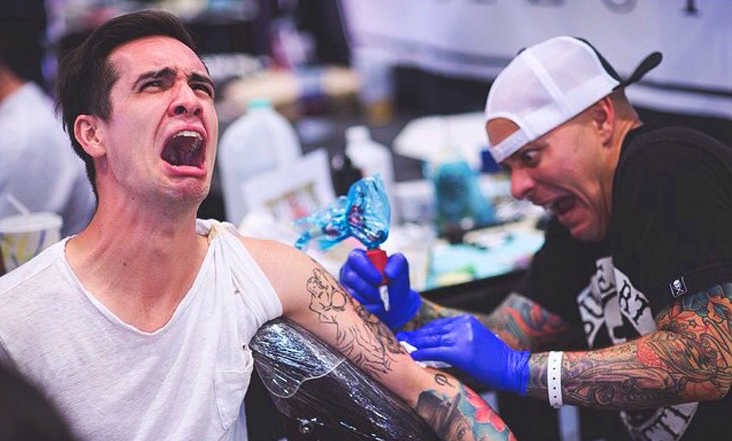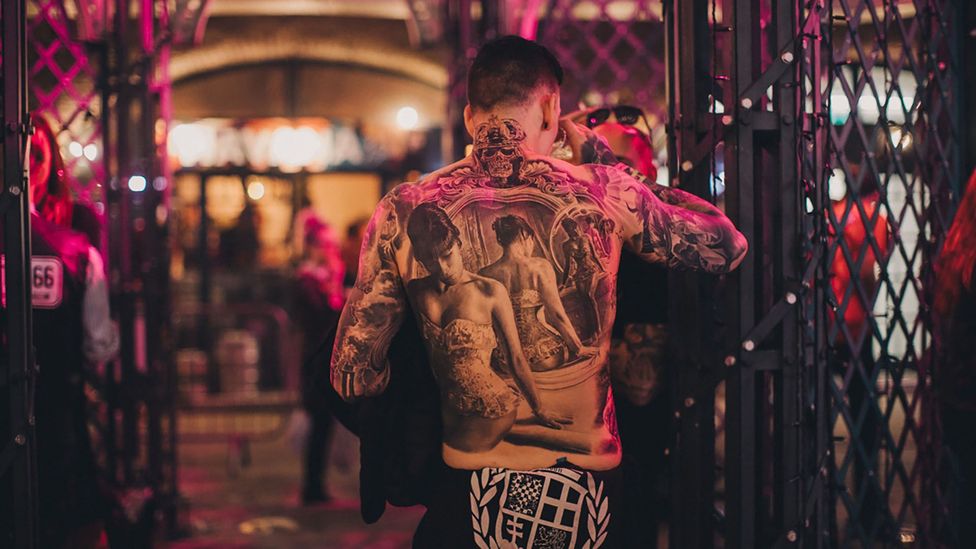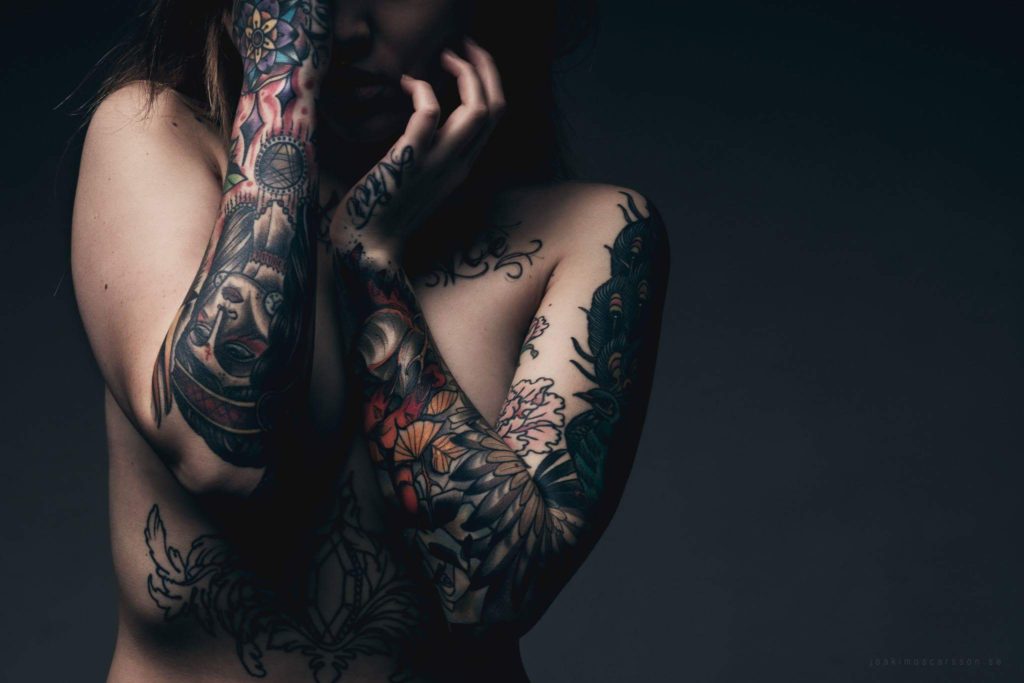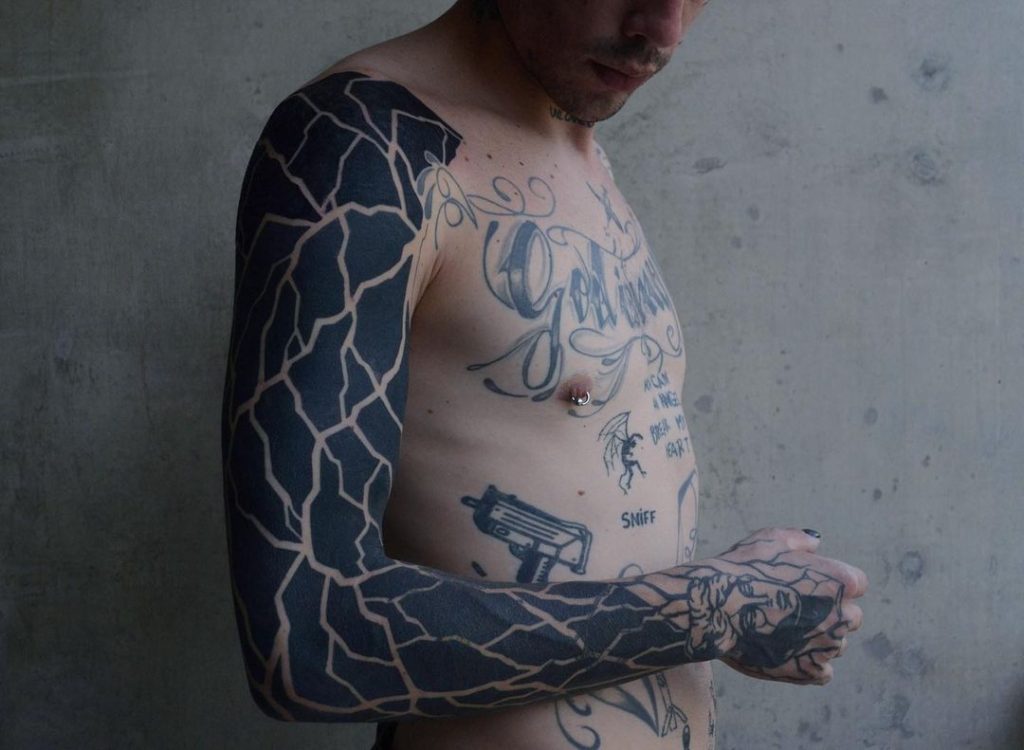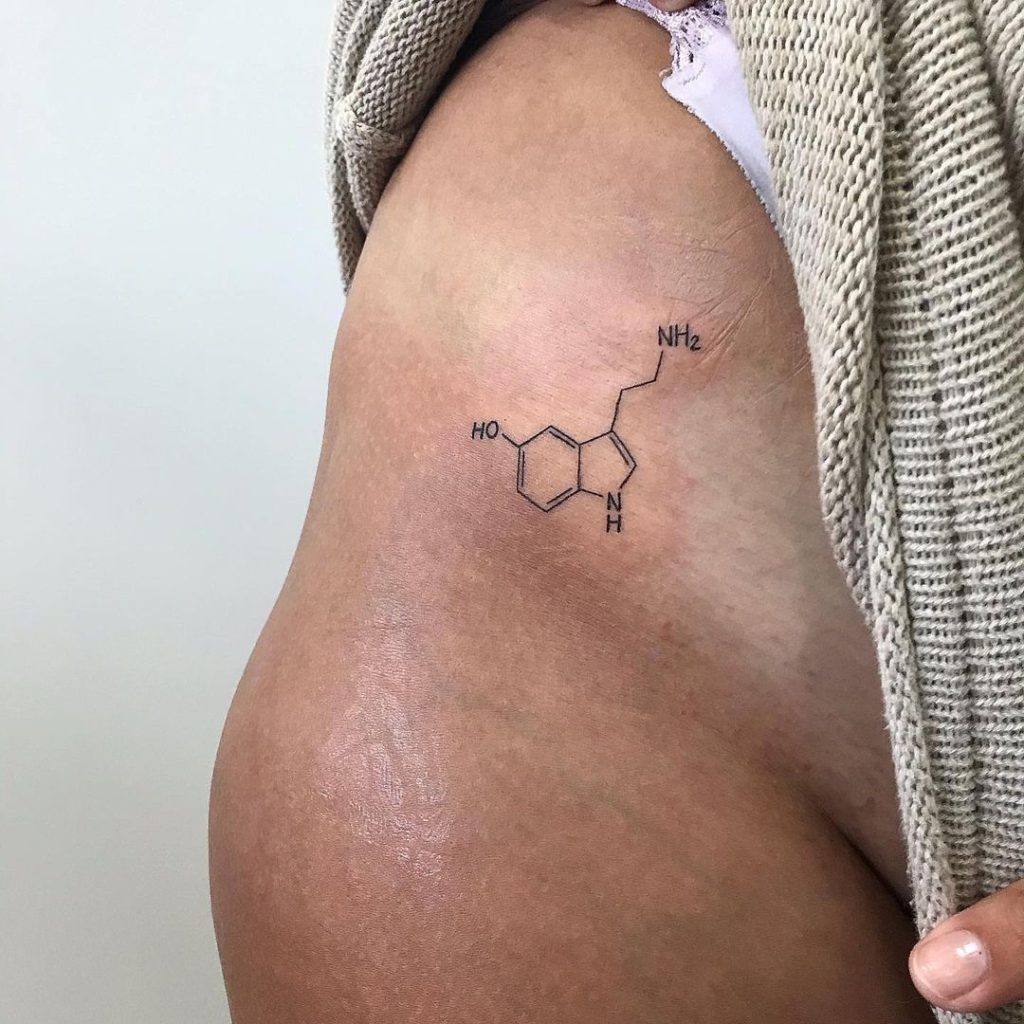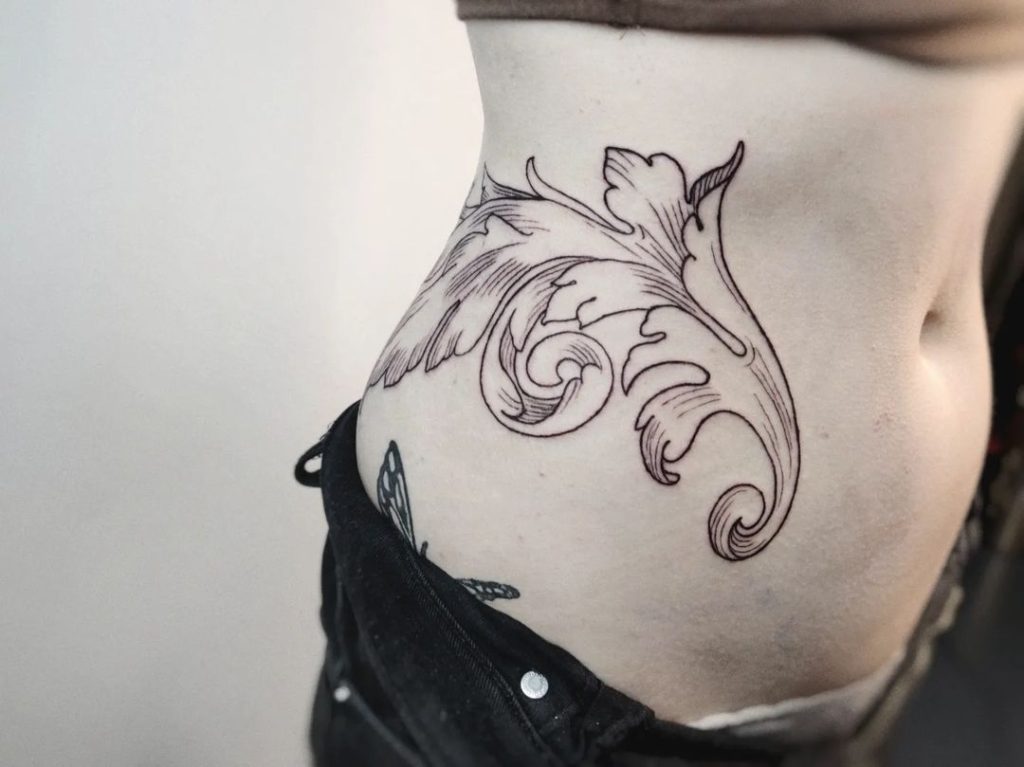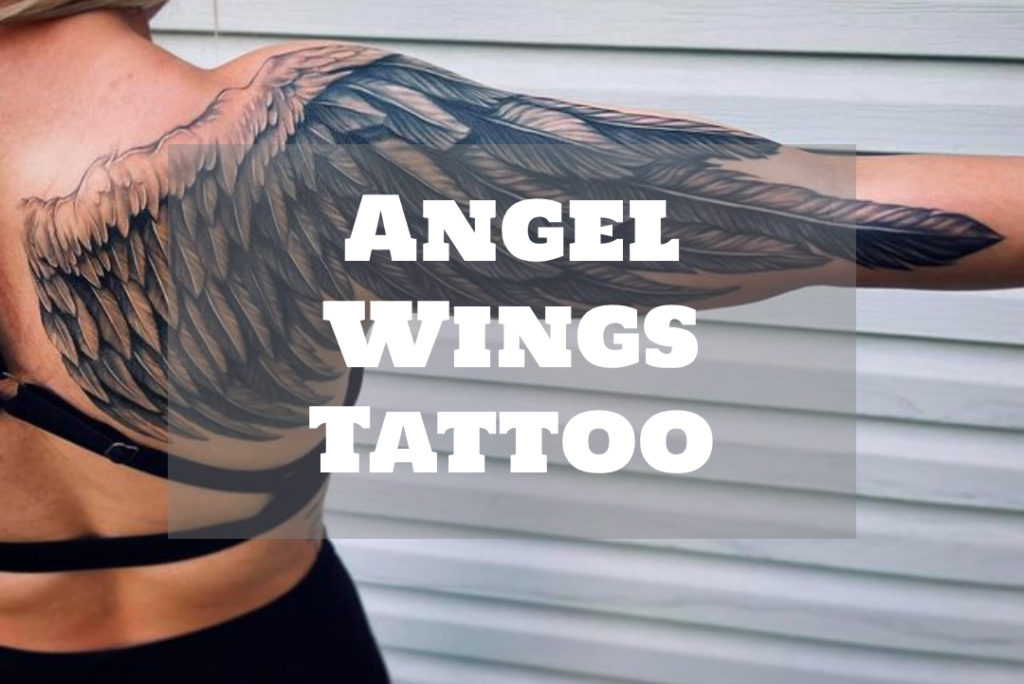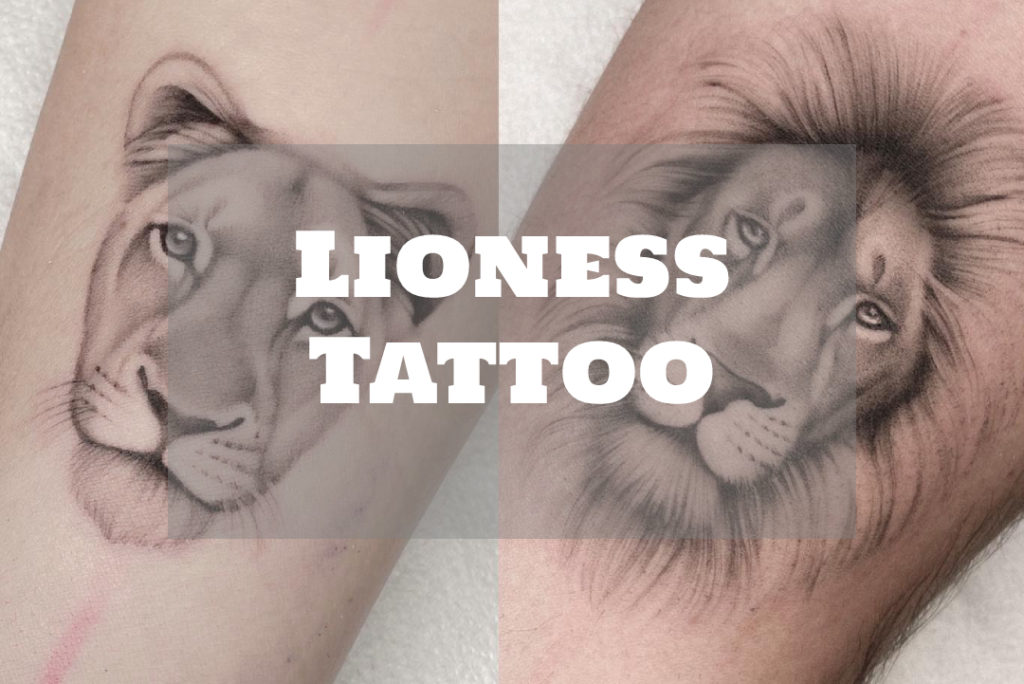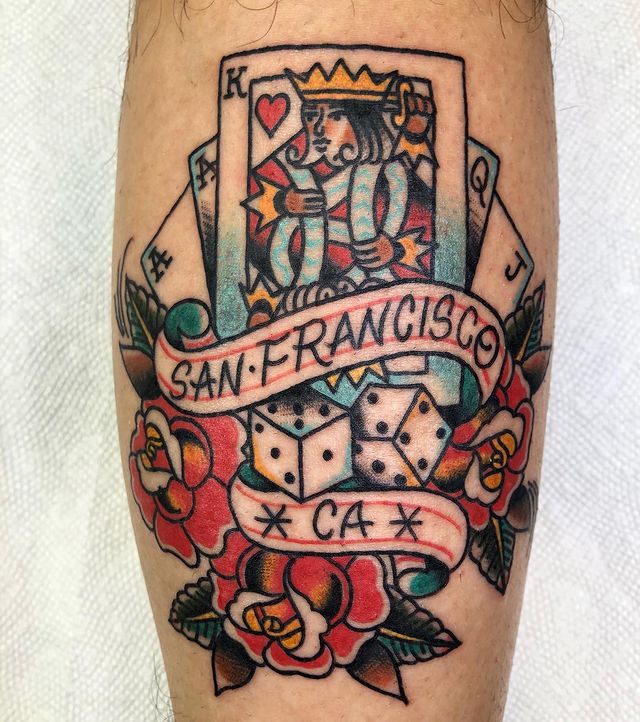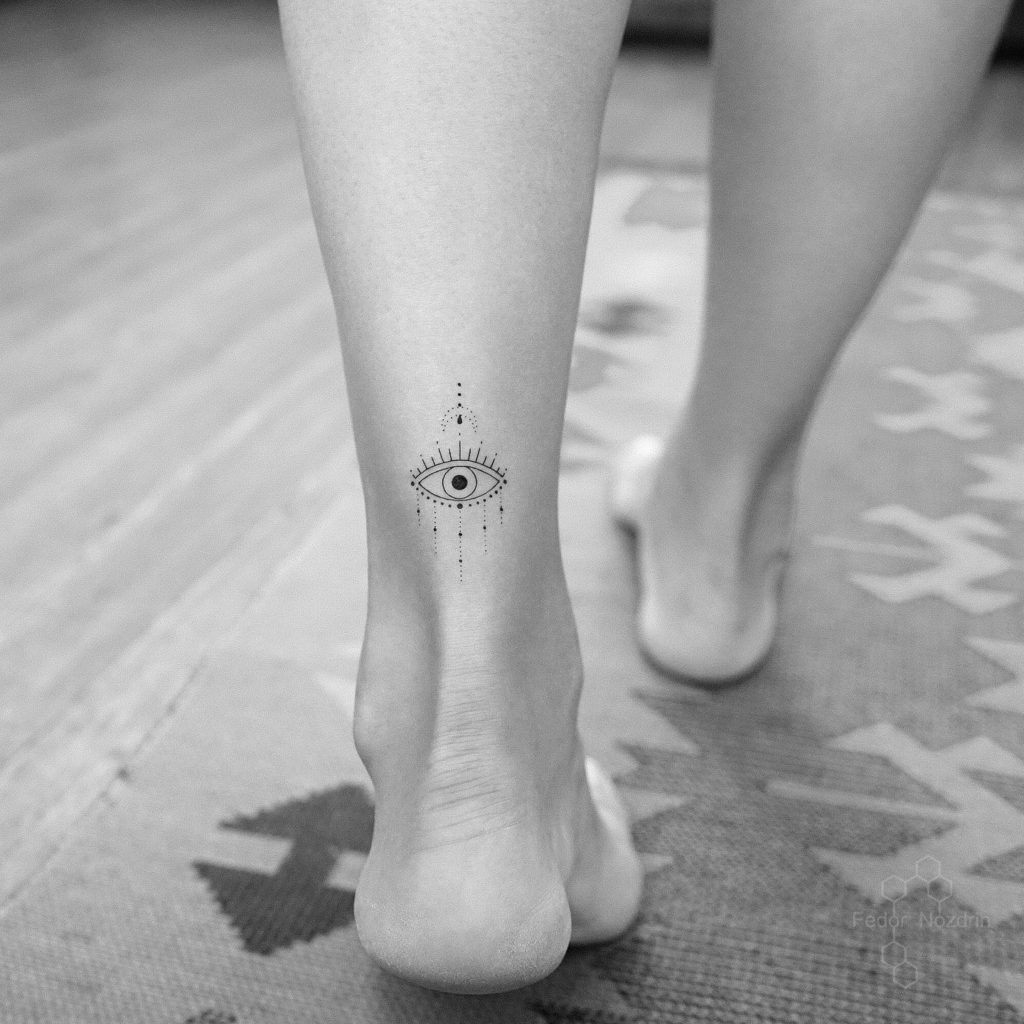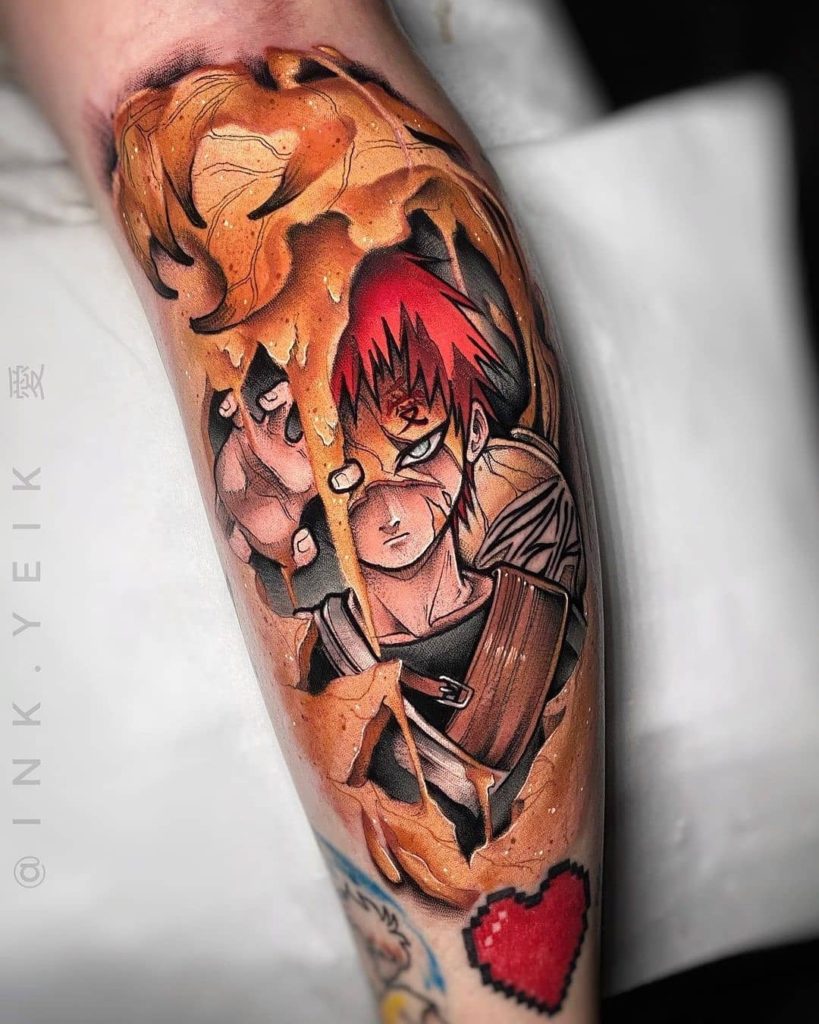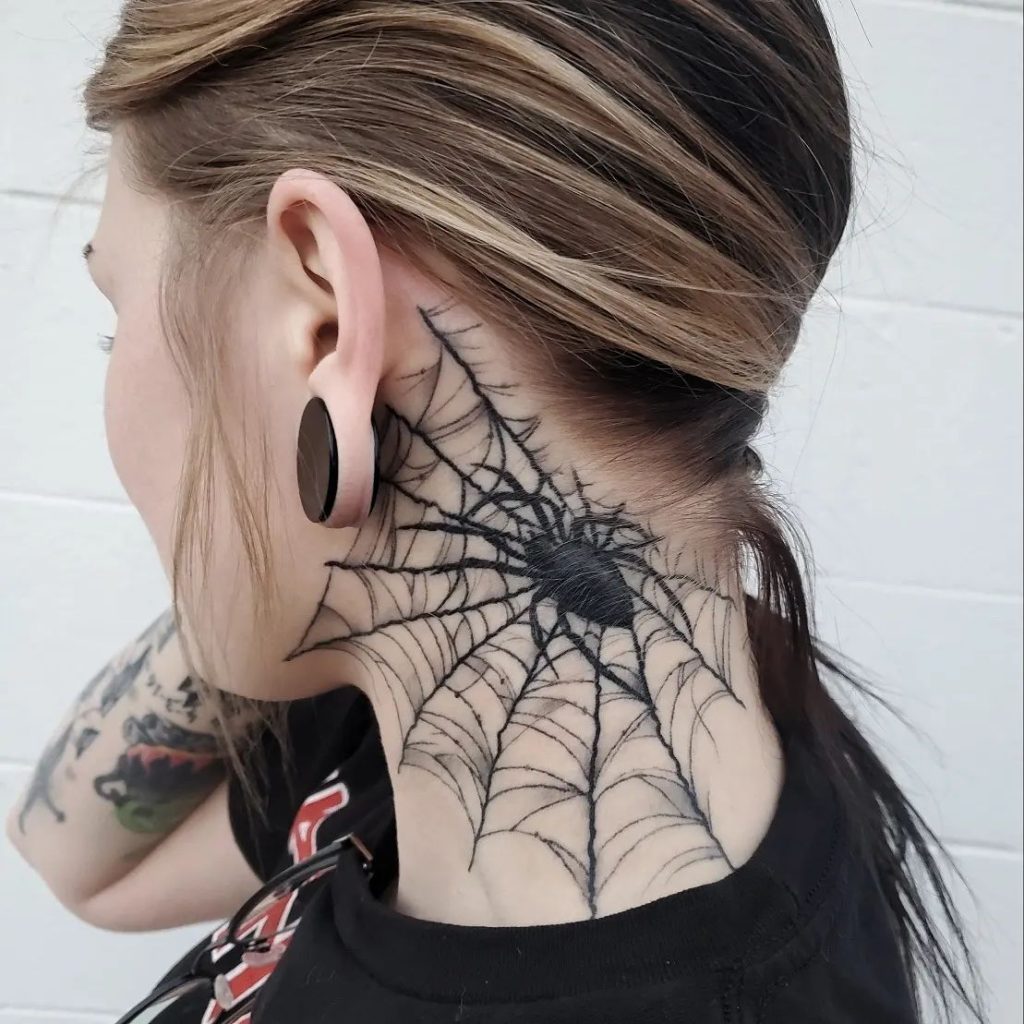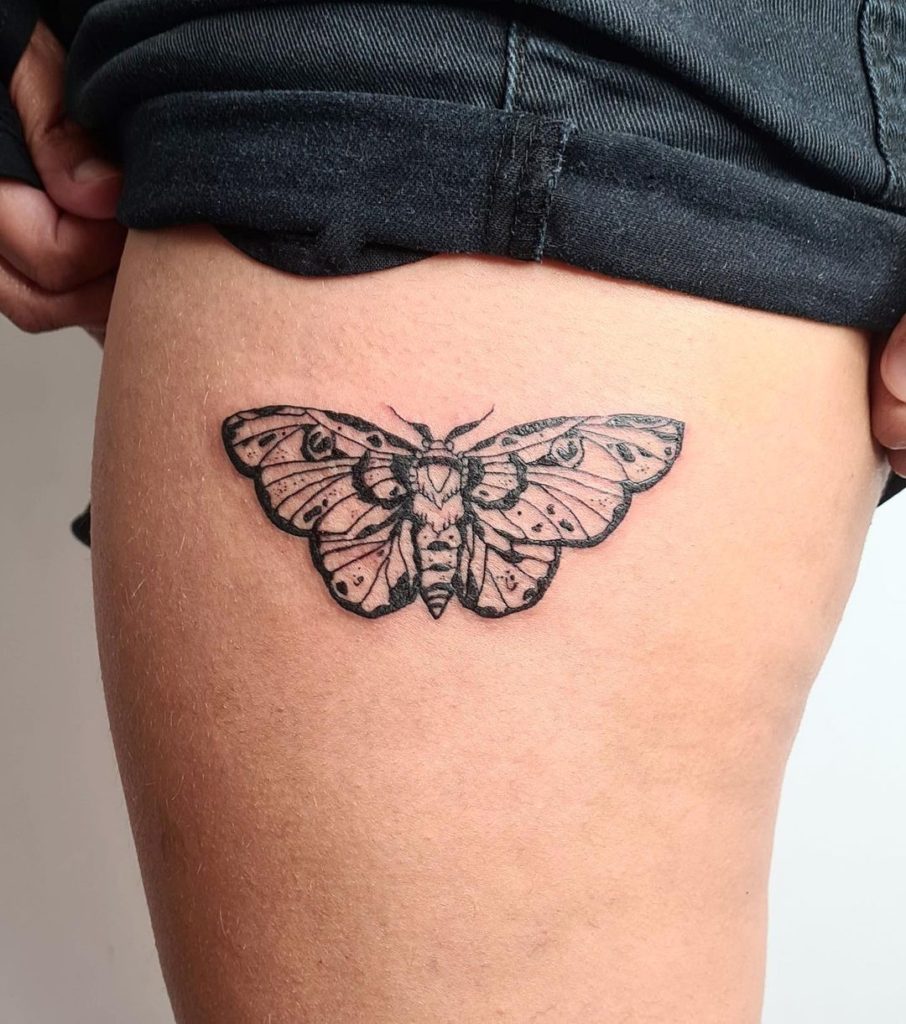Japanese tattoos, called irezumi, are one of the most popular styles in tattoo art, but were you aware that every image used in Japanese tattoos has a meaning and purpose?
The deep meaning of these tattoos has added a depth to the art that has helped them persist for centuries and increased their appeal to so many outside of Japanese culture. If you’re thinking about getting a Japanese tattoo, we recommend reading this guide to get acquainted with the meaning of traditional irezumi.
There’s a lot to learn and if you’re going to put something on your body that lasts forever, you should at least understand what it means.
There’s a lot to cover, so if you know exactly what you’re looking for, here’s a table of contents. Just click a link and it’ll take you to that section of the page. This guide includes pictures of the most common irezumi.
Table of Contents:
A Brief History of Japanese TattoosTraditional Japanese Tattoo Meaning
Japanese tattoo colors
Dragon Meaning
Koi Meaning
Phoenix Meaning
Tiger Meaning
Lion Meaning
Japanese Snake Meaning
Japanese Skull Meaning
Japanese Flower Tattoos
Oni / Demon Mask Meaning
Water / Wave Meaning
Japanese Script Meaning
Warrior Meaning
Sakura Meaning
Geisha Meaning
Maneki Neko Meaning
How To Pick The Right Japanese Tattoo
A Brief History of Japanese Tattoos
Traditionally, Irezumi began as a means of conveying societal status as well as serving as spiritual symbols that were often used as a sort of charm for protection as well as symbolizing devotion, not unlike modern religious tattoos.
Over time, tattoos in Japanese culture developed as a form of punishment similar to what was seen in Rome where it was common practice to tattoo prisoners of war, criminals, and slaves as a means of making their status in society instantly recognizable.
Eventually, the practice faded and tattoos returned as a status symbol among the merchant class who were, interestingly enough, banned from flaunting their wealth.

Following World War II, tattoos were outlawed by the Emperor of Japan in an effort to improve Japan’s image in the west. Tattoos in Japan then took on a criminal element, but this didn’t stop foreigners from being intrigued.
Naturally, they would seek out the skills of Japanese tattoo artists–a practice that helped keep Japanese-style tattoos alive, particularly since tattoos in Japan itself are looked down on.
The modern association between Japanese traditional tattoos and the criminal element is said to have led to the adoption of tattoos by the Yakuza, the Japanese mafia. This has also served to promote the aesthetic of Japanese traditional tattoos much in the same way American traditional tattoos were promoted. The element of criminality, or social taboo, created an air of danger and appeal.
Today many people proudly wear Japanese-style tattoos for their beautiful artistic merits, flowing composition, and the deep meaning associated with the many aspects of Japanese tattoo designs.
Japanese Tattoo Colors
You’ve probably searched for Japanese tattoos online and one thing you’ve noticed for sure are the “blinding” colors.
Japanese tattoo techniques have strong colors against some black and grey drops to pop the drama. The Japanese culture has its own associations with colors. So, before you decide on your tattoo check the meaning, not only of the design but of the colors too.
- Black – In Japanese culture, black is the color of mystery and sympathy. Also, when mixed with white, black can symbolize mourning. For a very long time, black was the only available color so it’s connected to the underground culture.
- White – Maybe it’s unusual but the white color symbolizes death in Japan. At the same time, it represents purity and peace. I know this might be confusing, but the whiteness represents the comfort and the purity of eternal life after death.
- Red – This is the happy color! Many Japanese joyful events such as birthdays and weddings include this color. Symbolizing vitality and passion, red details in a tattoo are shouting protection and power.
- Yellow – You really want to watch out for this color. In some areas, yellow represents optimism and joy, which is nice. But in others, it’s deceit! So, be careful when choosing yellow-detailed tattoos. You don’t want to be misjudged, do you?
- Blue – Luck and fidelity. When you want to bring some genuine power and a good vibe you are free to go with blue.
- Purple – Yes, the royal and regal color. In the early years, purple was very hard to produce, so it was saved for the higher class. Purple signifies royalty in other cultures as well, so you shouldn’t be surprised by this.
Traditional Japanese Tattoos: The Meaning

Japanese tattoo meaning is tied to the various creatures, plants, and people depicted in the tattoo. This goes beyond the typical metaphoric or implied meaning inherent to all art– These images are used to convey a person’s beliefs, aspirations, or character traits. In some cases, they even tell famous stories and myths.
Called “motifs“, these design elements are intended to have the same meaning wherever they are used so that meaning is not unique to the individual. That means that anyone that sees the tattoo can instantly recognize the meaning and what the wearer wants to have conveyed, be it personality traits, character attributes, or association with a criminal organization.
Japanese Dragon Tattoos:
Tattoo Meaning: wisdom, strength, a force for good, wind/water
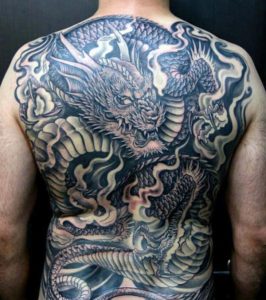
Dragons in the West traditionally symbolize strength, ferocity, and wealth. Dragons are destructive forces, but they are also considered guardians.
The Japanese, and the East in general, see dragons differently. In traditional Japanese tattoo art dragons are generous, benevolent forces that use their strength to do good for mankind.
Wisdom is another trait attributed to dragons. These positive connotations have made dragon tattoos among the most popular of Japanese style tattoos.
Koi Tattoos:
Tattoo Meaning: determination, strength, courage, desire for success, water
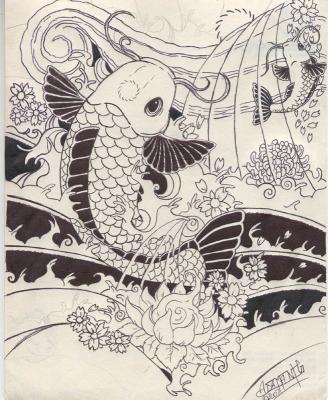
Japanese tattoos of koi fish are another of the most popular tattoo designs in traditional Japanese tattoo art. Koi is a specially bred type of carp, a fish native to China. Koi are given masculine qualities in traditional Eastern folklore such as strength and bravery.
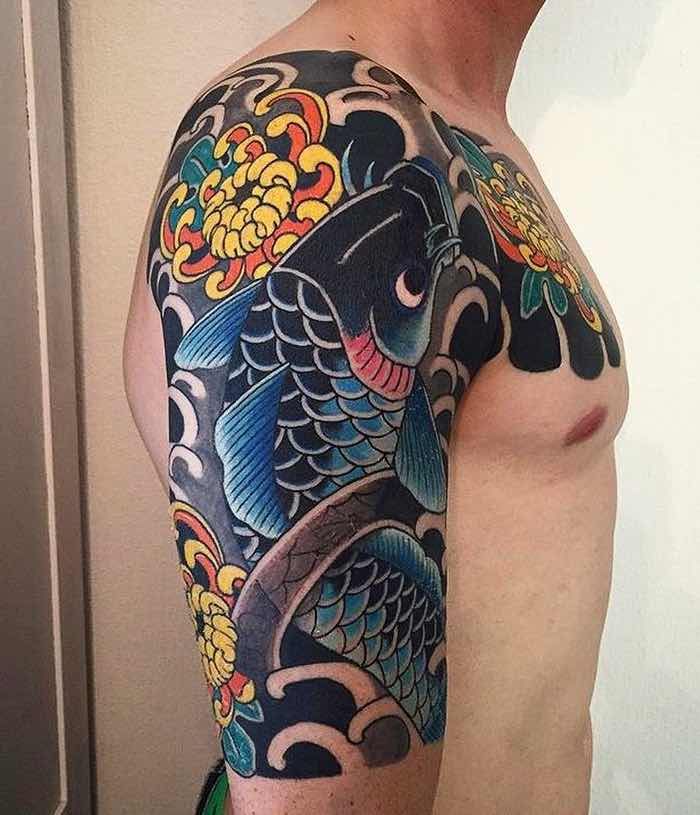
The Koi in China are known to swim upstream in the Yellow River, but very few swim past a point known as “Dragon’s Gate”. Koi who make it past Dragon’s Gate is said to be rewarded by turning into dragons. For this reason, Koi also symbolize determination and a strong desire to succeed and become “something more”.
Phoenix Tattoos:
Tattoo Meaning: rebirth, triumph, fire
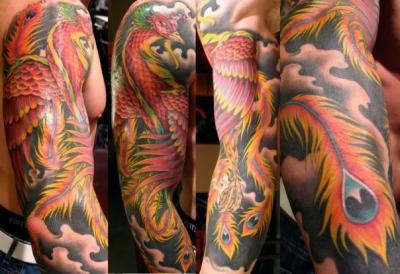
This tattoo, like many other irezumi, shares a background with other cultures. The Phoenix is a bird that is consumed by fire and then rises from its own ashes. The story exists in many cultures and at many times throughout history, including Greek and Roman mythology, Middle Eastern folklore, and even the Americas.
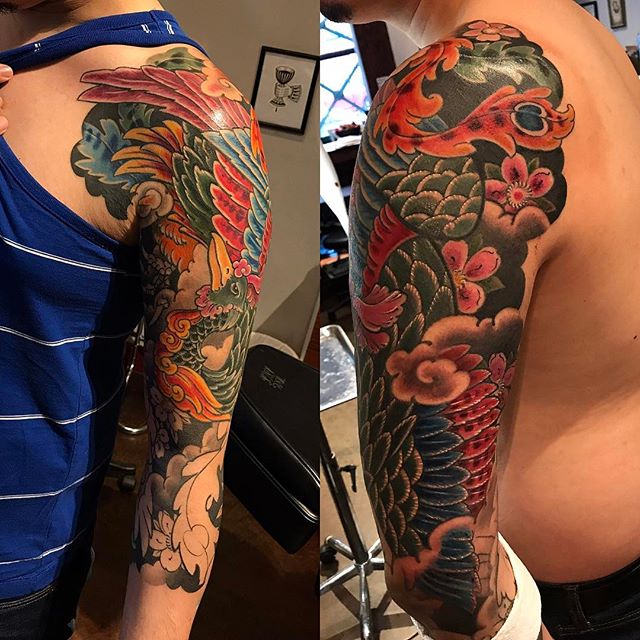
The Japanese phoenix story draws its source from the story that’s indigenous to mainland China. The Chinese phoenix has a different background from the phoenix story the Western world is familiar with.
The Chinese phoenix tattoo represents both the masculine and the feminine– Yin and Yang. The name of the phoenix in Chinese is Feng Huang; Feng – a male bird and Huang, a female one. It is said to appear only in times of peace and prosperity.
It is also said that the Chinese phoenix is a creature of morality, shunning those who do not meet its high moral standards. The phoenix is said to exemplify justice and graciousness. It does not tolerate abuse of power.
Tiger Tattoos:
Tattoo Meaning: strength, courage, protector against bad luck, evil spirits, and disease, wind
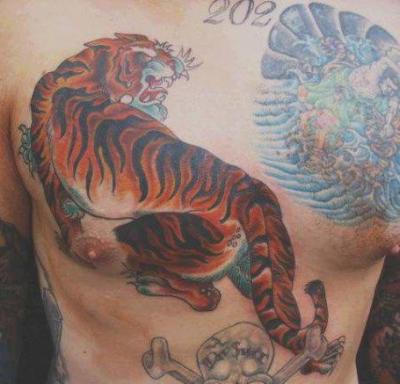
The Japanese tiger tattoo carries with it the same traits we attribute to the real animal–strength and courage, but also long life. The tiger tattoo wards off evil spirits, bad luck, and disease.
The tiger is a symbol for both the North and for autumn, they control the wind, and they are one of the four sacred animals.
Lion or Fu-Dog tattoos:
Tattoo Meaning: protective, strong, courageous, good luck, heroism
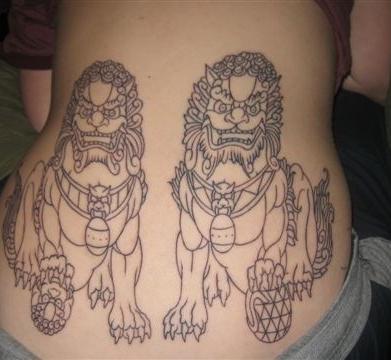
This tattoo resembles both a lion and a dog. More specifically, it looks like a lion with pointed ears. Fu Dogs are protective, strong, and courageous. As statues they serve to keep evil out, as tattoos, they serve as protectors and often indicate a courageous person with heroic aspirations.
Japanese Snake Tattoo:
Tattoo Meaning: protection, wisdom, good luck, strength, and change
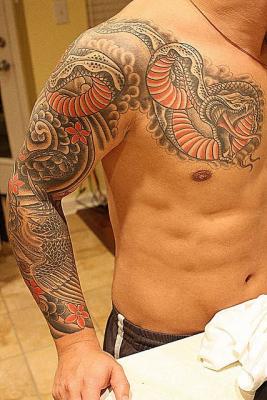
In traditional Japanese tattoos, the snake holds a wide range of meanings and performs a number of important functions. Among its many attributes is protection from illness, disaster, and bad fortune.
Snake tattoos also represent wisdom and protection, particularly from the results of bad decisions. The snake also embodies regeneration, healing, and medicine. Revered in Japanese culture, the snake was associated with medicinal rites and remedies. As a symbol of good luck, it was also thought to bring good health.
The Japanese snake tattoo also represents the Divine Feminine or the holy female attributes. It was thought that much in the same way a snake sheds its skin, a woman could take on the positive attributes of a man. Seems a little sexist, but it was ancient Japan, after all.
Japanese Skull Tattoos:
Tattoo Meaning: life, death, change, reverence for dead/ ancestors
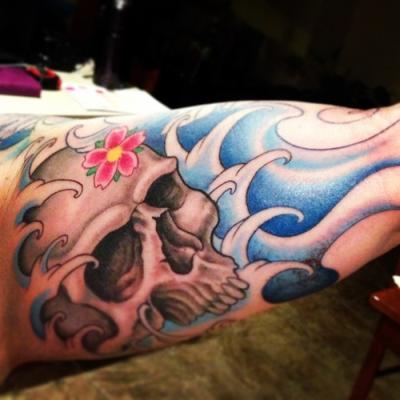
The image of the human skull in the majority of tattoo culture– and art in general, has a negative connotation (such as death, danger, and an ill fate), the skull used in Japanese tattoos is intended to be a positive representation of the natural life cycle.
Traditionally, the Japanese skull tattoo represents change, which makes sense as death is the greatest change man can experience. See more skull tattoo styles.
Japanese Flower Tattoos:
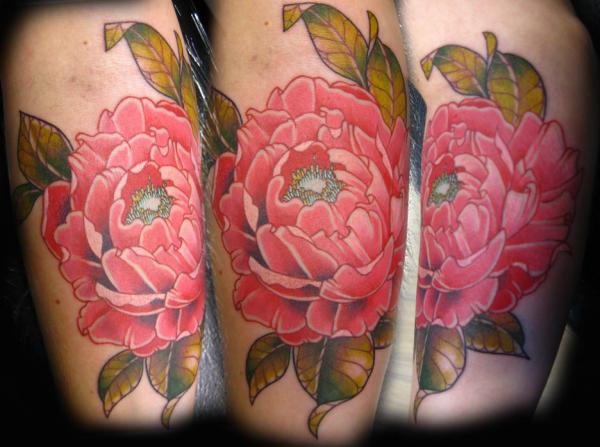
Japanese flower tattoos have a wide variety of meanings and are a very important and highly valued design in traditional Japanese tattoo art. For the sake of convenience, we’ve included the information about Japanese flower tattoos in our Flower Tattoos section.
Oni/ Oni Mask/ Demon Mask Tattoo:
Tattoo Meaning: good and evil, protectors, tricksters, demons
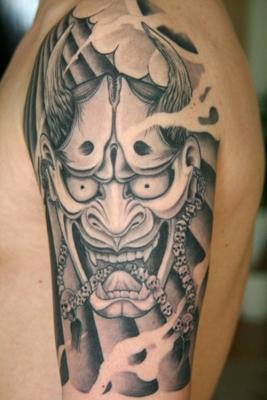
The Oni Mask tattoo in Japanese tattoos is extremely common and refers to the belief in a spirit world in which demons carry out their roles of punishing the unjust and evil, as well as spreading disease (seems like a random thing to be responsible for, but I guess it fits in with the whole evil-doing business).
While Oni is known for being evil, some Oni is good and are seen as protectors. One instance of this would include a monk who becomes an Oni after death to protect his temple. In English, the word Oni is best translated as ogre or troll (the Japanese word for “demon” is actually “yokai“). Oni, in traditional Japanese folklore, we marauding ogres are known for terrorizing villages and tormenting villagers. Oni’s association with demons in Japanese tattoo art has more to do with ogres being grouped into the realm of supernatural creatures (along with yokai) than anything else.
Still, the symbolism holds as the imagery of the marauding ogre isn’t far from the idea of the evil spirit which the tattoo aims to convey.
Water/Wave Tattoos:
Tattoo Meaning: movement, strength, fluidity, life
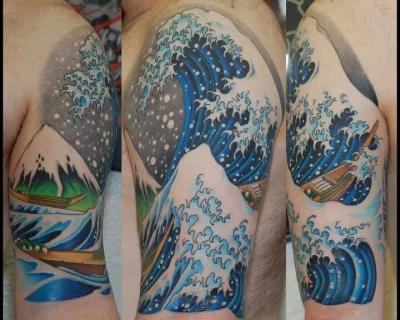
Many Japanese tattoos feature water. Specifically, waves are an element of Japanese tattoo art that is perhaps among the most recognizable (Think traditional Japanese artists, like Hokusai). In addition to symbolizing strength and life, water tattoos convey the belief that life, like water, ebbs, and flows.
It is strong and swift when necessary, but can be gentle and calm as well.
More Tattoo Designs: Rad Japanese Tattoo Designs: Dan Sinnes
Kanji: Japanese Script
Tattoo meaning: message, personal commitment
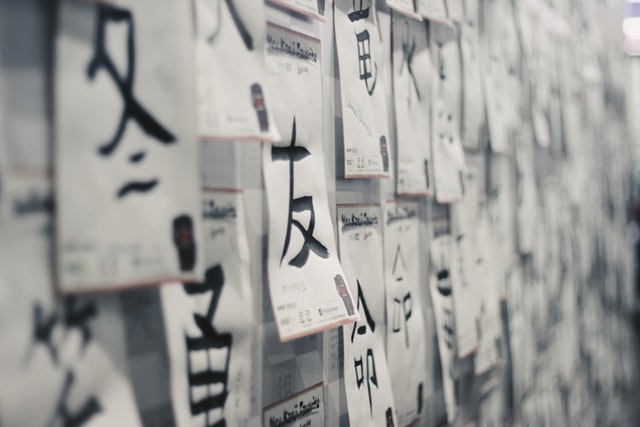
Kanji are actually Japanese characters from the Chinese script. Well, these are still pretty popular these days.
These symbols or Kanjis can have different meanings depending on the context and the order they are put into.
Sure, they are very cool because you can put some message with hidden meaning and have people wondering what it is. But you run the risk of not knowing the context and meaning yourself. So, if you want the Kanji tattoo make sure to consult someone who really understands the script. Don’t fall in the bulk of tattoo regrets.
Japanese Warriors
Tattoo meaning: honor, commitment, greatness
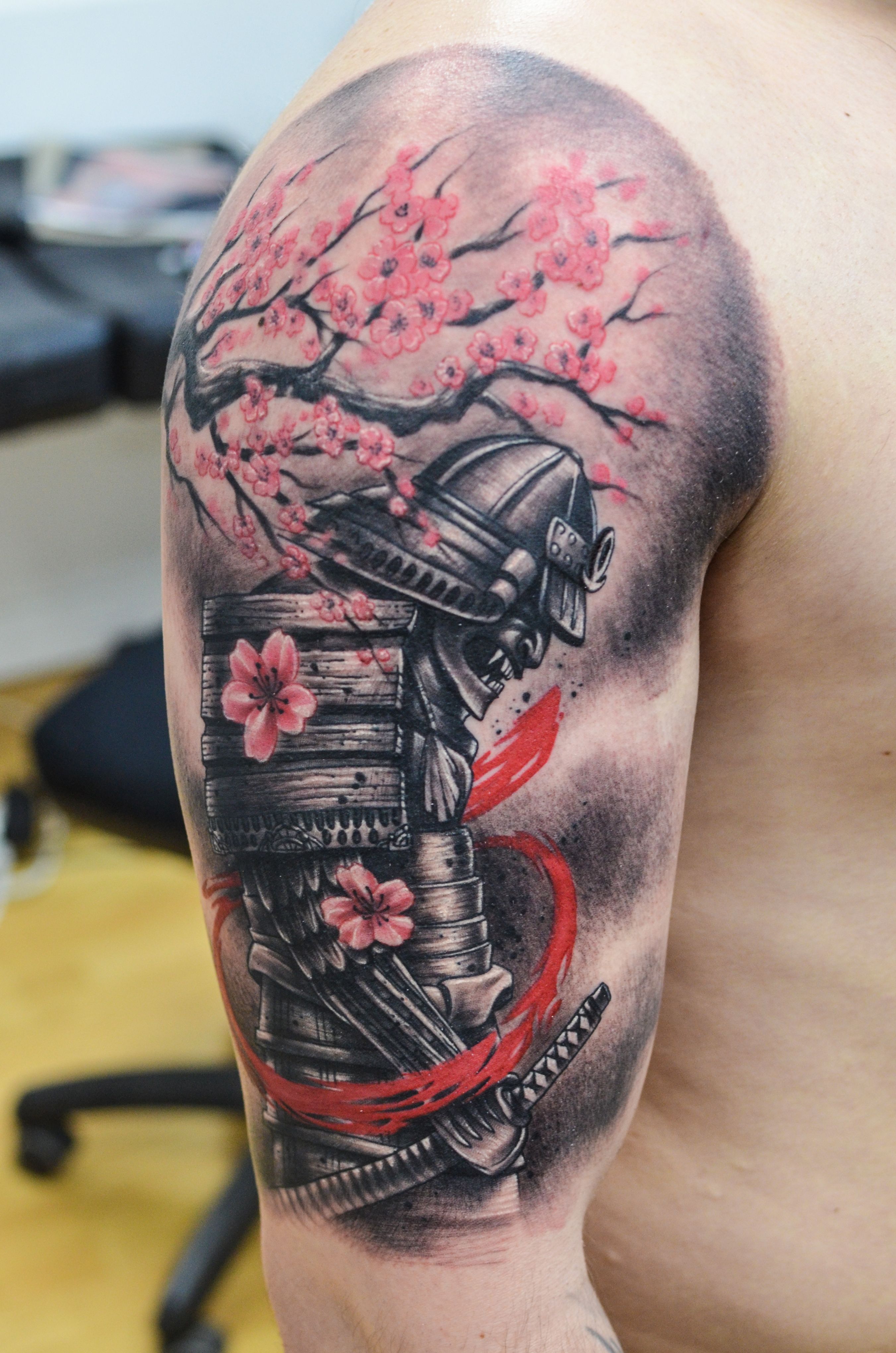
You know you love the samurai.
Japanese warriors are very popular because of their honor and the symbolism of greatness. This is one of the traditional Japanese tattoos honoring the great warriors and their great minds.
The best way to make a great warrior tattoo is a sleeve. I know it’s quite a commitment, but that’s what warriors do, right?!
Sakura
Tattoo meaning: short but great time alive on earth
Sakura or Cherry blossom flowers are the cutest symbols in the Japanese world. They bloom only for around 14 days which Japanese people align with the short (but yet beautiful!) time we spend on Earth.
Japanese practiced Buddhism since forever and it’s no wonder why they have such respect for nature and cherishing life.
Geisha
Tattoo meaning: muse, perfection
Even they appear in myths and legends, geishas are real. They are an artistic representation of the perfect female and often are considered muses.
Japanese men admire the geishas for years and it’s obvious why they are one of the most popular tattoo designs in Japanese culture.
Maneki Neko
Tattoo meaning: luck, fortune, wealth
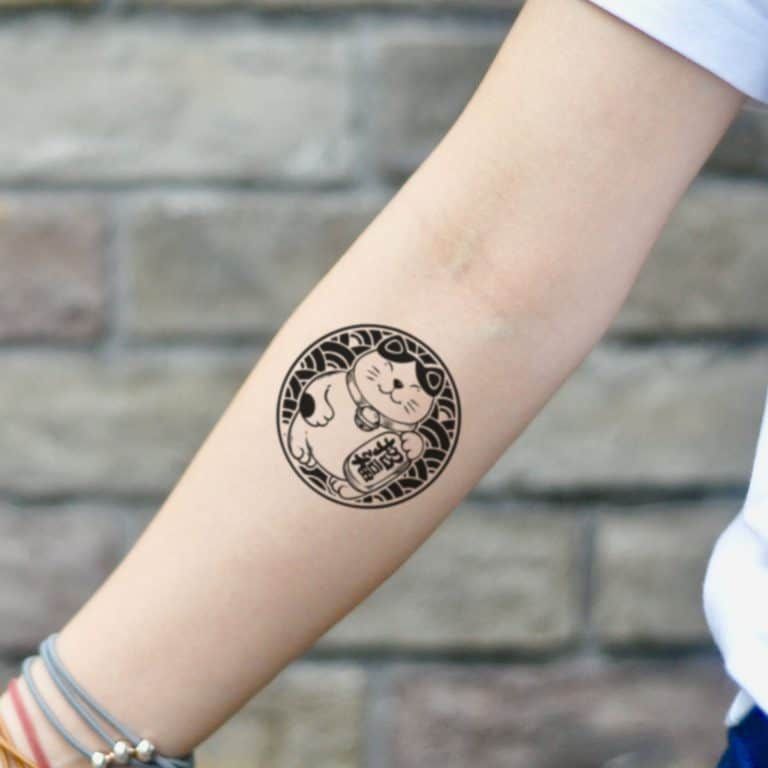
You know Hello Kitty. Well, Maneki Neko is a representation of the “lucky cat”. Japanese people believe that it brings luck and fortune. The raised kitty paw is the symbol of luck and fortune, so that’s why they included this cute creature in the tattoo culture as well.
They simply love kitties. They have them as pets, in the culture, and in fairytales.
How to pick the right tattoo for you?
If you’re thinking about getting a tattoo and you’re a real tattoo lover (and a brave one!) it’s very probable that you’ll go for a Japanese tattoo style. Especially if you’re a fan of Japanese art and culture.
So, you’re guessing how to start and decide. Let me help you.
First of all, you have to decide on the tattoo design you want. Ask yourself about your story, the message, and the meaning you want to make eternal and worth remembering. Having any tattoo on your skin is quite a commitment, but having a Japanese one is a real game-changer.
And now that you know the meaning and the symbolism behind each tattoo art, it should be easier for you to make a decision. That’s why we created this brief list of Japanese tattoo designs. You just have to pick.
Now that you have talked to yourself and picked the design (knowing its meaning) to support and represent your story, you have to pick the placement. This is an important step. As I said earlier in this post Japanese tattoos are really wide and colorful, so they demand a bigger space to express all that detailed linework.
Here are the most common and the most suitable body parts you can get your tattoo on:
- On the forearm
- On the chest
- On the shoulder
- On the feet
- On the back
- On the thighs
- On the calf
- On the side
- On the hand
- On the neck
The hand and the neck are perfect places if you don’t want to make a boom and have that dramatic art all over you.
But I’ve got to tell you – some people have the guts and make a whole-body story covered with tattoos. If you’re one of them – well, congrats!
And the final step is to find a great tattoo artist. This is maybe the most crucial part of the process. The best advice is to go to a traditional Japanese tattoo artist. They use traditional techniques and know-how to put the “code” together in order to make sense.
Of course, not everyone can travel to Japan just to get a tattoo. But everyone has access to the internet and can do some deep-dive research, check some photos, read some reviews, and find a great tattoo artist in their area.
So, take your time and don’t rush with the decisions. You’ll have the story on your skin forever, so it’s wise to take some time to prepare for it the way you should.
Looking for Something More Unique?
These aren’t for everyone, but if you want to get a traditional Japanese tattoo with some more interesting subject matter, be sure to check out our post on Yokai tattoos.
These tattoos feature odd creatures from Japanese folklore and ghost stories. Some you might recognize, or you might not.
One thing’s for sure, you won’t see many people supporting these.

